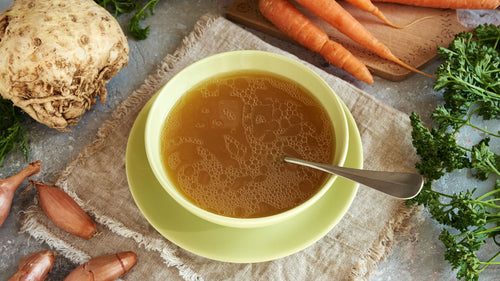
Peristalsis and Your Digestive Tract
Published on Wednesday, January 26, 2022 by Allison KochThe Rhythm That Moves Your…Food
Peristalsis is a heartbeat-like rhythm of muscle contractions that not only assist in moving food through the digestive system, but they also help with moving urine from the kidneys into the bladder and bile from the gallbladder into the duodenum (the first part of the intestine).
This heartbeat-like rhythm is stimulated once people swallow food or beverage and it’s not a party of beats that you can control moving through your body, it’s completely involuntary. So when something interrupts this rhythm, there can be trouble.
Sometimes certain medications can cause issues with peristalsis, but there can be other conditions such as motility disorders that can lead to chronic constipation or chronic diarrhea because the rhythm is going too fast (hypermotility) or too slow (hypomotility). These can be complicated to treat because other factors are typically involved, which is why GI Doctors (Gastroenterologists) are consulted because they are the digestive specialists.
Here are some examples of the different types of motility disorders:
- Irritable Bowel Syndrome (IBS): With IBS, people can experience hypermotility which is associated with IBS-D, hypomotility which is associated with IBS-C, or a mix of both hyper/hypomotility which is associated with IBS-M.
- Gastroesophageal Reflux Disease (GERD): Peristalsis in the esophagus can be impaired in sufferers of GERD, particularly in those with severe cases. Also, impairment of the lower esophageal sphincter in GERD allows for stomach acids to flow backwards, which esophageal peristalsis is meant to keep reflux in the opposite direction (towards the stomach).
- Dysphagia: In this condition, peristalsis is affected in the esophagus and both food and liquids can be difficult or impossible to swallow.
- Gastroparesis: A condition that is known to cause symptoms of nausea, vomiting, abdominal discomfort, and a feeling of fullness while eating, this motility disorder is the result of a delayed stomach emptying due because the stomach muscles are not working properly.
- Intestinal pseudo-obstruction: This is an uncommon condition, but with an intestinal pseudo-obstruction, your body reacts as if there is a blockage in your intestines during digestion, but there is not a blockage present. The symptoms are quite painful and the condition can be very serious.
Fun Fact: If you have ever been sick and thrown-up (vomited) before, you have experienced reverse peristalsis, which actually starts in your small intestine and moves towards the stomach in a backwards flow.
When it comes to nutrition interventions for motility disorders, individualization is key because of the different nutrition needs. However, if you do have a motility disorder- it is always a good idea to write down your intake in a journal for a week before you see the Registered Dietitian for the first time. This includes everything: not just your meals, but also your beverages and condiments, so the RD can help you to assess what may be triggering any symptoms you are having and help create an individualized plan to help you meet your nutrition needs.
Want to see a quick video of what peristalsis looks like? Check this out.
A.D.A.M. Medical Encyclopedia [Internet]. Johns Creek (GA): Ebix, Inc., A.D.A.M.; c1997-2020. Peristalsis; [updated 2022 Jan 12; reviewed 2020 Aug 13; cited 2022 Jan 13]; [about 1 p.]. Available from: https://medlineplus.gov/ency/anatomyvideos/000097.htm
Tasty snacks for on the go!
SOLELY Organic Banana Fruit Jerky, 0.8 Ounce
Leave a comment on this article:
-
Allison Koch
PhD, RDN

Understanding Food Labels for a Low FODMAP Diet

The Top Low-Impact Exercises for Gut-Happy Fitness

Low FODMAP Lemon Glazed Cinnamon Rolls
RECIPE INSIDE
Safe and Savory Spring Soiree: Tips for an Allergy-Free Picnic

Omega-3 Supplementation– A Must For Fatty Liver?

Beyond Bouillon: Demystifying Bone Broth, the Simmering Wellness Sensation


